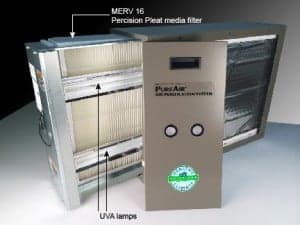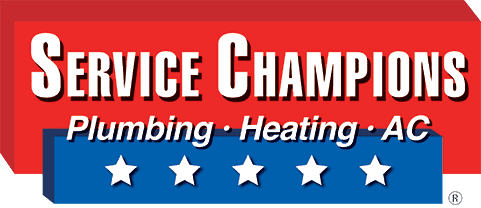How to Change the AC Filter
What is the AC filter and why is it important? Are they really necessary to replace?
AC filters do so much for our homes. They protect our indoor air quality. They save homeowners money on heating and air conditioning. AC filters also help the entire central air system work better and longer on less. They keep our homes and us healthy. AC filters are responsible for the quality of our home comfort.
Why Should Homeowners Change the AC Filter?
- We inhale more than 15,000 quarts of air every day
- We spend most of our time indoors
- Indoor air can be 100 times more polluted than outdoor air
- The EPA ranks indoor air pollution as one of the top five environmental dangers
What type of indoor air pollutants are in our homes?
Indoor air pollutants include:
- VOCs
- Phthalates
- PBDEs
- Microbiological growth
- Pollen
- Pet dander
VOCs are volatile organic compounds. These include acetone, ethanol, isopropyl and formaldehyde. They result from cleaning agents, paints and other supplies.
Phthalates are acidic compounds found in plastics and vinyl.
PBDE stands for polybrominated diphenyl ethers. These compounds are found in flame retardants, building materials, furnishing, automobiles, plastics, textiles and electronics.
Indoor air pollution is a huge health risk, with children and elders most likely to suffer from asthma, allergies and other respiratory issues.
What is the best way to reduce indoor air pollution? Minimizing the source of pollutants proves to be the most effective method. However, this isn’t always 100 percent doable. As a result, HVAC specialists encourage homeowners to utilize the tool they have and need most on a daily basis: the central air system.
How can homeowners use the central air system to clean indoor air?
Each furnace system comes with an AC filter. Every time the heating and air conditioning runs, indoor air passes through the AC filter. Particles of varying sizes are captured in the AC filter. In fact, the AC filter captures about 50 percent of all airborne particles. However, the AC filter works only when the central air runs. In addition, the AC filter gets old, overused and full.
What can homeowners do about it? They can and should change the AC filter on a regular basis.
Where to Find and How to Remove the AC Filter
Before attempting to replace the AC filter, please make sure that the furnace is turned off. If the central air system has been running, wait until the system cools before exchanging the AC filter.
The AC filter looks like large windowpane. It has a sturdy frame made of plastic of cardboard. The inside portion of the AC filter is typically pleated or ribbed in a crisscrossed fashion. This portion is the AC filter.
The AC filter is located near the furnace, either below or above depending on the type of installation you have. This area may have a small door that needs to be opened in order to access the AC filter.
Once you locate the AC filter, gently pull while holding the AC filter from both sides. The AC filter should give little resistance and slide out of its slot.
From this point, you should assess the AC filter. Has it gotten dirtier? Has the color of the AC filter changed? If so, or if you know that the AC filter has not been changed within the last three or four months, toss the current AC filter.
Use the Right New AC Filter

Homeowners new to AC filter care should understand that AC filters come in difference sizes and strengths.
For quick reference, check the size panels of the old AC filter you just removed. There should be some indication of the brand, measurement and filtration grade. Otherwise, consult the furnace user manual for this information. If you no longer have the user manual, you can also search online by the make and model of your furnace and locate the corresponding AC filter. If none of these options work, contact your HVAC contractor. He or she will determine the right fit of AC filter for your furnace.
Typical measurements for AC filters include:
- 16 x 20 x 1 inches
- 20 x 25 x 1 inches
- 20 x 25 x 4 inches
While the size of the AC filter must be correct, homeowners have the option to choose a different brand of AC filter. You are not confined to one particular type or brand of AC filters.
Popular AC filter brands include:
- Honeywell
- Aerostar
- AirX Dust
- 3M Healthy Living
- Nordic Pure
- Web Eco Plus
- Filtrete Micro
- FilterBuy
In addition, there are different types of AC filters. These include:
- Washable AC filters
- Fiberglass AC filters
- Polyester AC filters
- Pleated AC filters
- High-efficiency AC filters (HEPA AC filters)
While reusable AC filters may seem like the economical choice, they run the risk of collecting and growing microbiological growth. They tend to require more care and decrease in efficiency with use.
Likewise, fiberglass AC filters are affordable but do a poor job of protecting indoor air quality. The most economical and practical option for the majority of homeowners is to use polyester or pleated AC filters. These AC filters are fantastic at cleaning indoor air of pollutants, require little maintenance as they are disposable, and are cost-effective.
For homes that need more, high-efficiency AC filters are an option. However, these AC filters are not recommended for every home. Because they do such a fine job capturing the most microscopic airborne particles, they are expensive and not at all energy-efficient. For most homes, high-efficiency AC filters are not the practical choice.
As for AC filter strength, homeowners should look for a rating called MERV. It stands for minimum efficiency reported value and it measures how efficient an AC filter is at removing particles from airflow. The higher the rating, the more efficient the AC filter is.
To reiterate, keep in mind that the efficiency rated in MERV is not in reference to energy efficiency. MERV efficiency refers to the AC filter’s effectiveness in removing airborne particles. A higher MERV rating indicates that the AC filter is more effective at removing smaller particles. This means that AC filter grows fuller faster and therefore needs to be replaced more frequently. It also means that airflow passes through the AC filter more slowly, restricting airflow. This requires more energy spending for heating and air conditioning.
Most homeowners do well with an AC filter with a MERV rating between 8 and 13.
AC filters with a rating between MERV 5 and 8 capture:
- Fine dust, sprays
- Dust, dust mites
- Microbiological growth, spores
- Pet dander, hair
AC filters with a rating between MERV 9 and 12 additionally capture:
- Fumes, vapors, gasses
- Bacteria
AC filters with a rating between MERV 13 and 16 additionally capture:
- Insecticide
- Smoke
- Cooking oil
- Droplet nuclei (sneeze spray)
- All bacteria
In order to determine what AC filter works best for your home, first determine the size you need. Then, consider a reputable brand. After, try to consider what indoor air pollutants you want to remove and how much they affect your home comfort.
If your home is filled with sources of VOCs that hinder comfort and peace of mind, you want an AC filter that would be able to capture all those particles. Finding the right AC filter takes experimentation. Fortunately, there are plenty of options. There certainly will be an AC filter that works for your home and lifestyle goals.
Fit the New AC Filter
The new AC filter goes in the same way it was removed. Gently fit and slide the new AC filter into the slot. It should be a snug fit. If there are any gaps of loose spots, the AC filter is the wrong size.
Homeowners should also take note when they replaced the AC filter. Take a permanent marker or pen and write down the month and year of the replacement.
Maintain the AC Filter Regularly for the Best Benefits
How often should homeowners replace the AC filter? AC filter should be replaced at least twice a year in between major seasons. However, if homeowners regularly use their furnace and air conditioner, the AC filter need to be replaced more often.
Just how often depends on the household. Typically, homeowners do well to replace the AC filter every three months. While that may sound excessive, using a clean AC filter for heating and air conditioning saves homeowners 15 percent on their utility bills. The maintenance is well worth the savings.
Lean On Service Champions for All Your HVAC Needs
Service Champions Heating & Air Conditioning is the Diamond Certified HVAC provider for Orange and Los Angeles Counties. We lead in heating and air conditioning installation, repair and maintenance. Thousands of homeowners trust us for our superior customer care and expert technical service.
To learn more about how to care for your home with AC filters, work with our experts. Complete the form below. You can also speak to our friendly call center representatives for further guidance.

